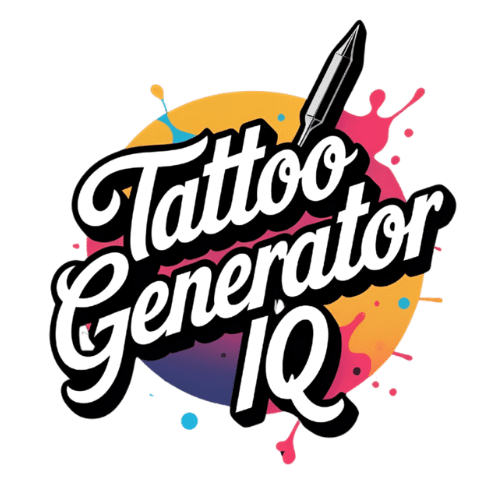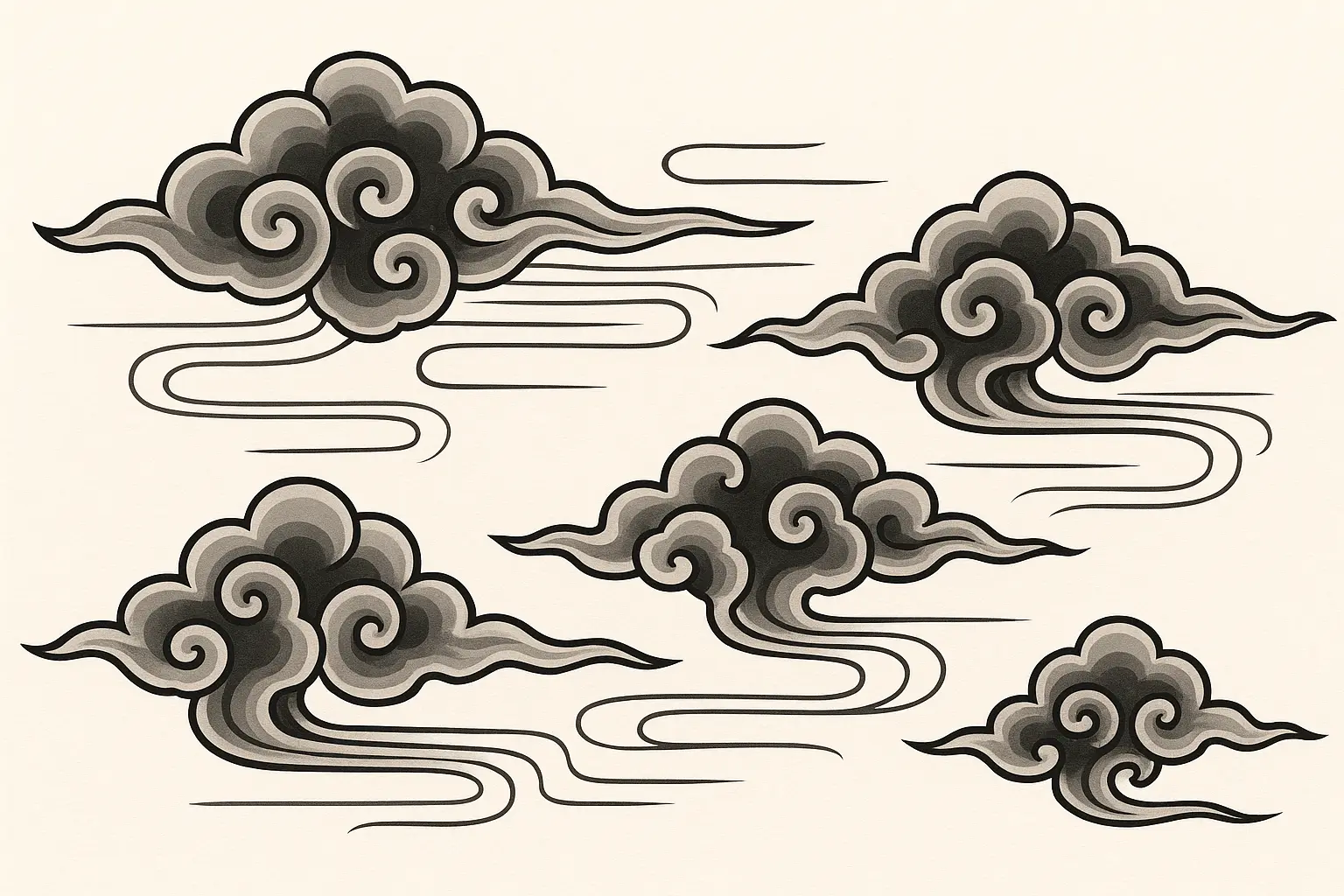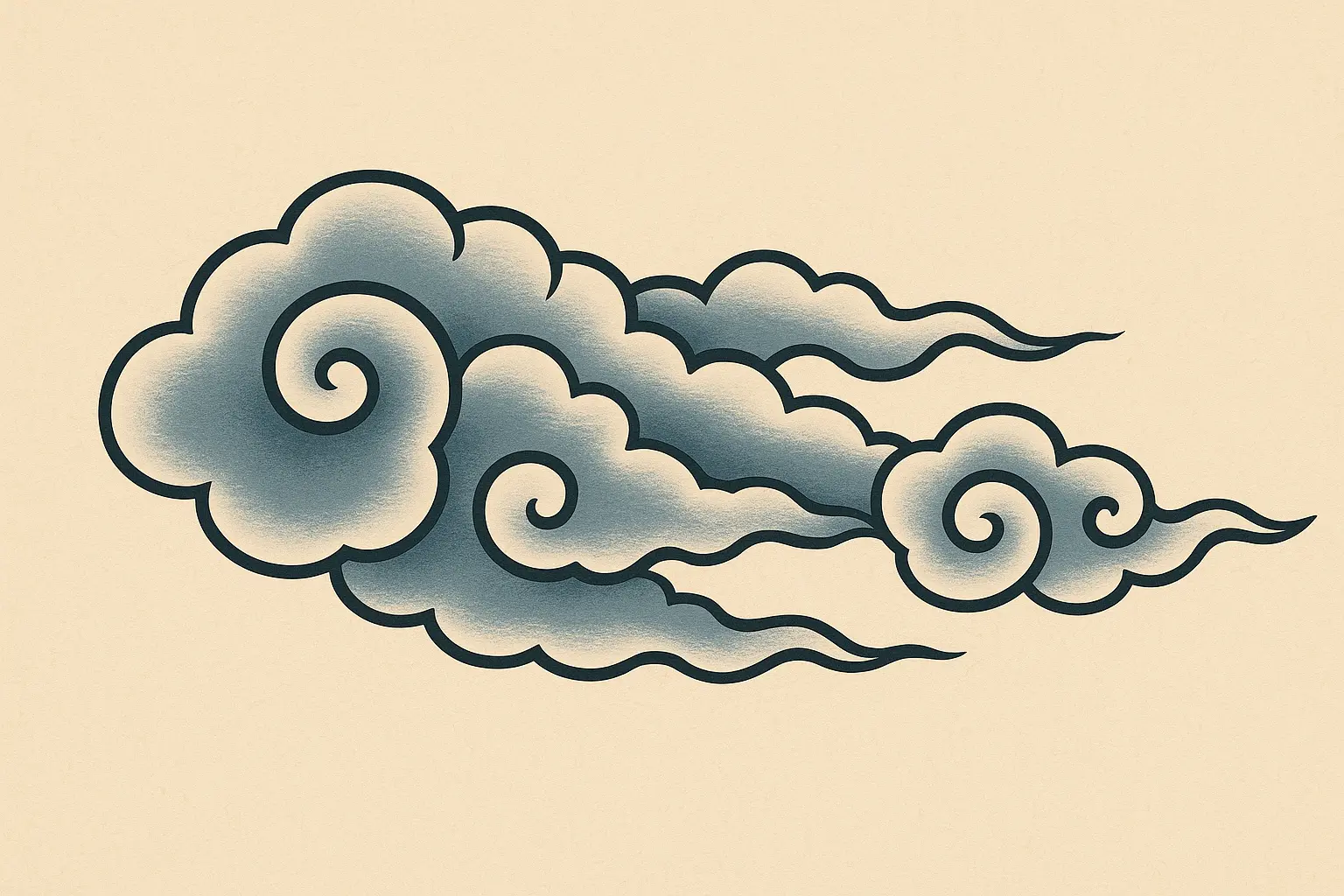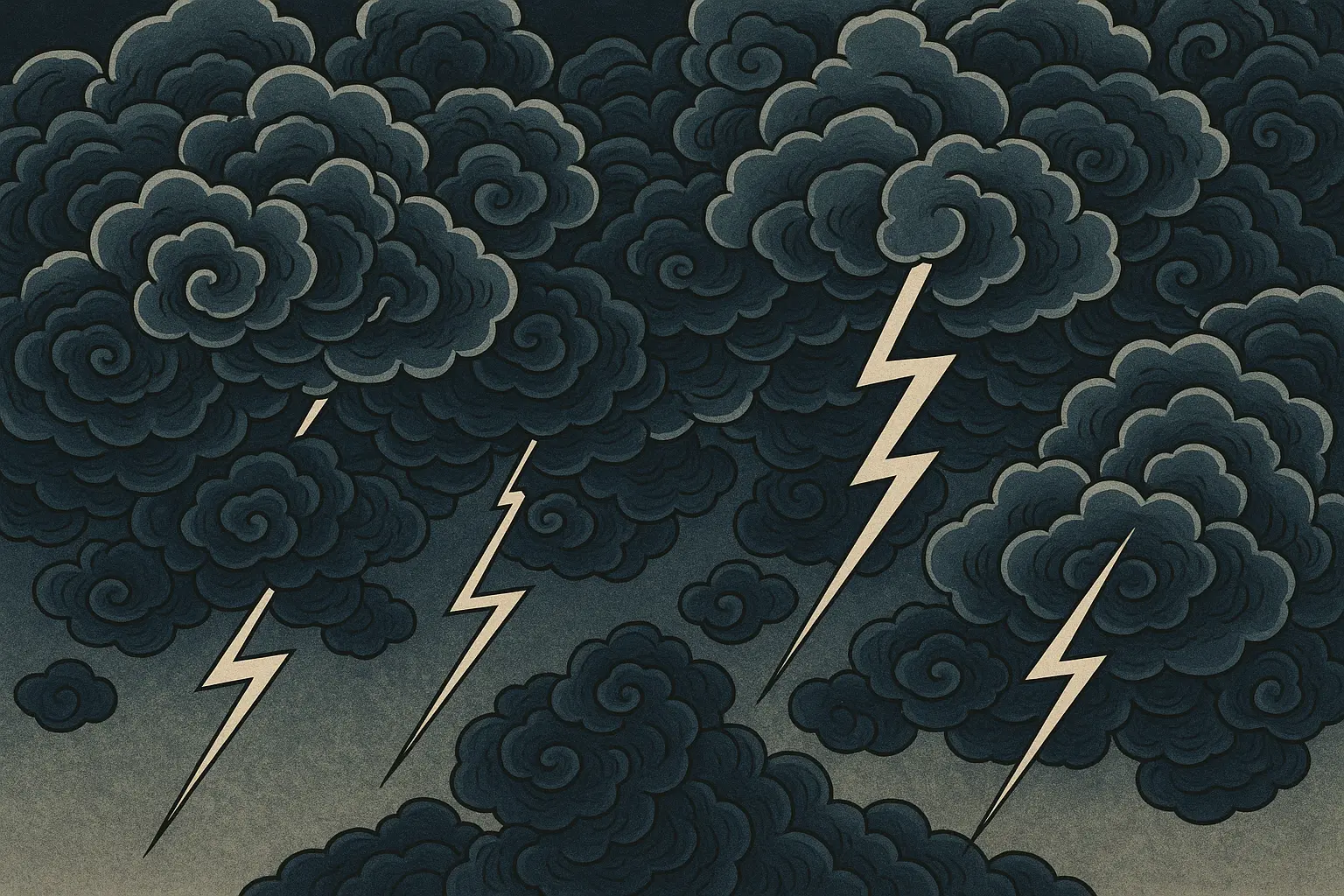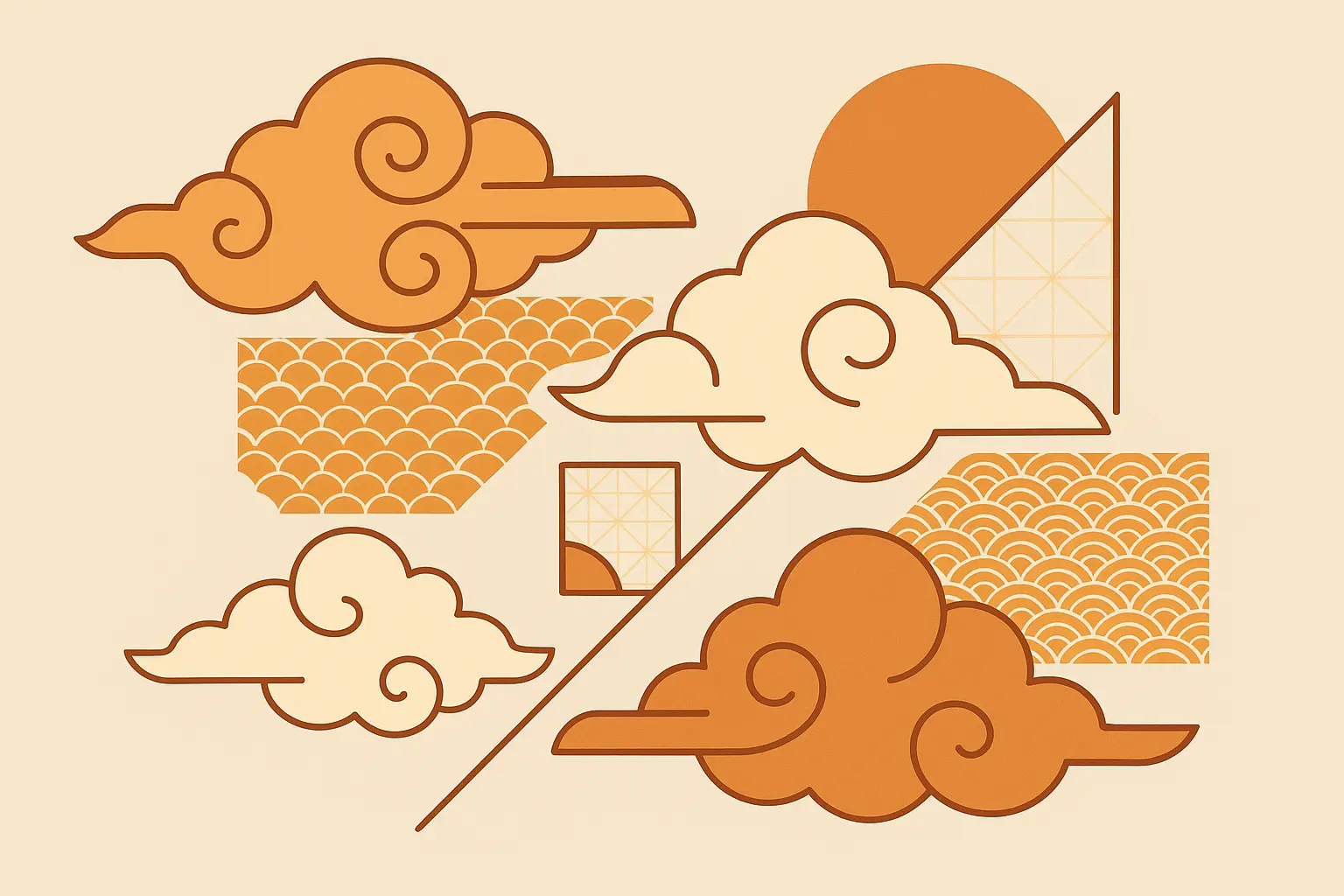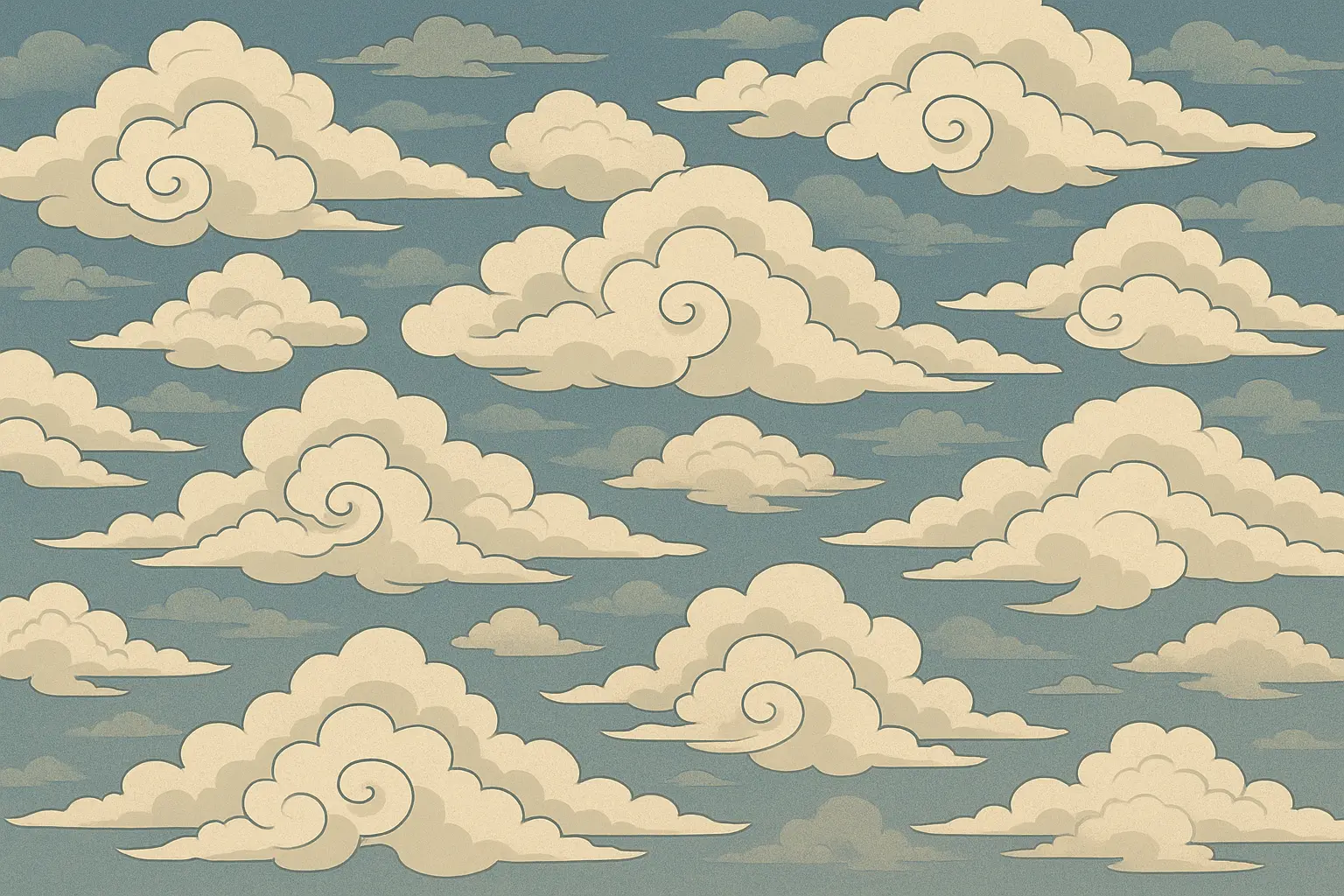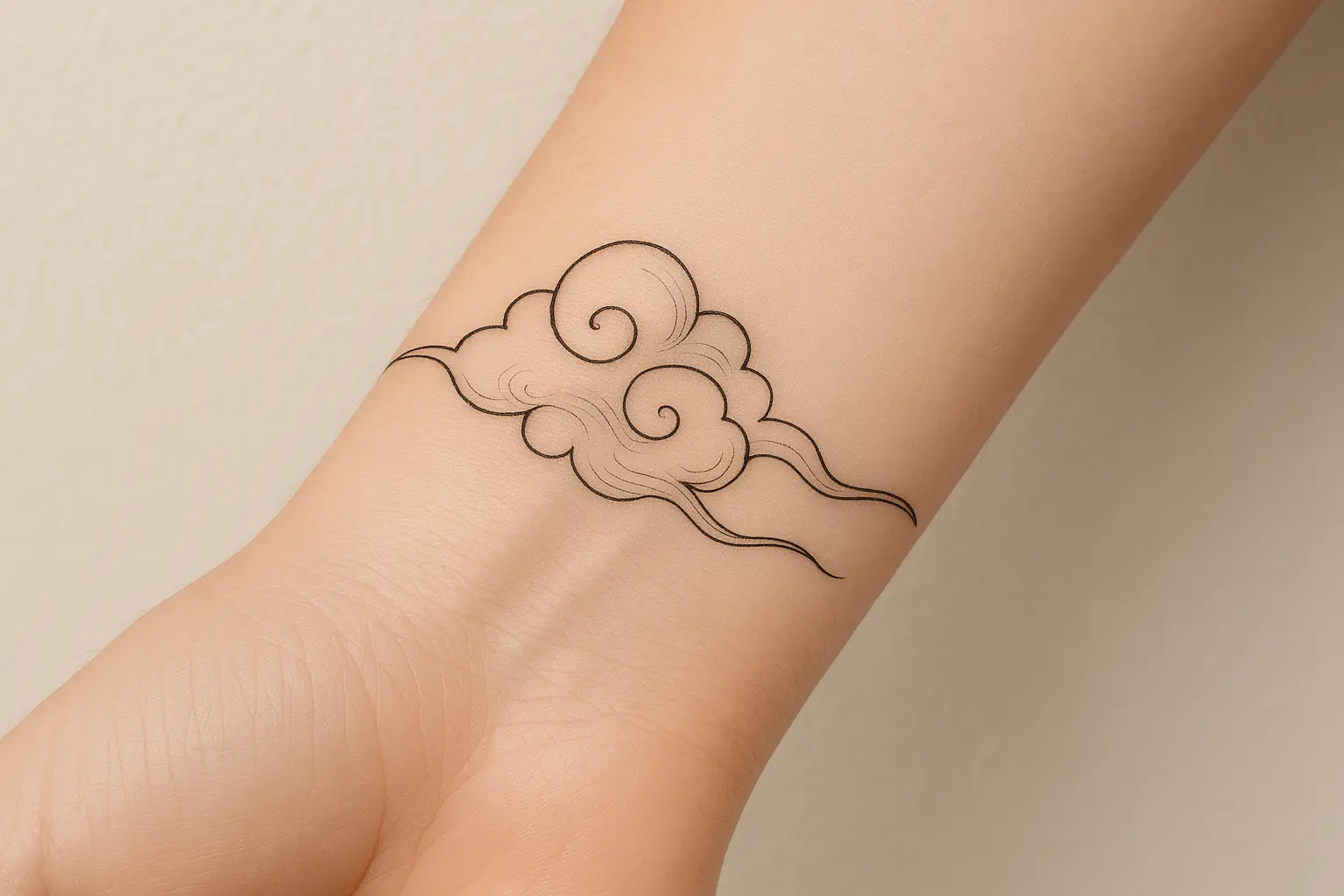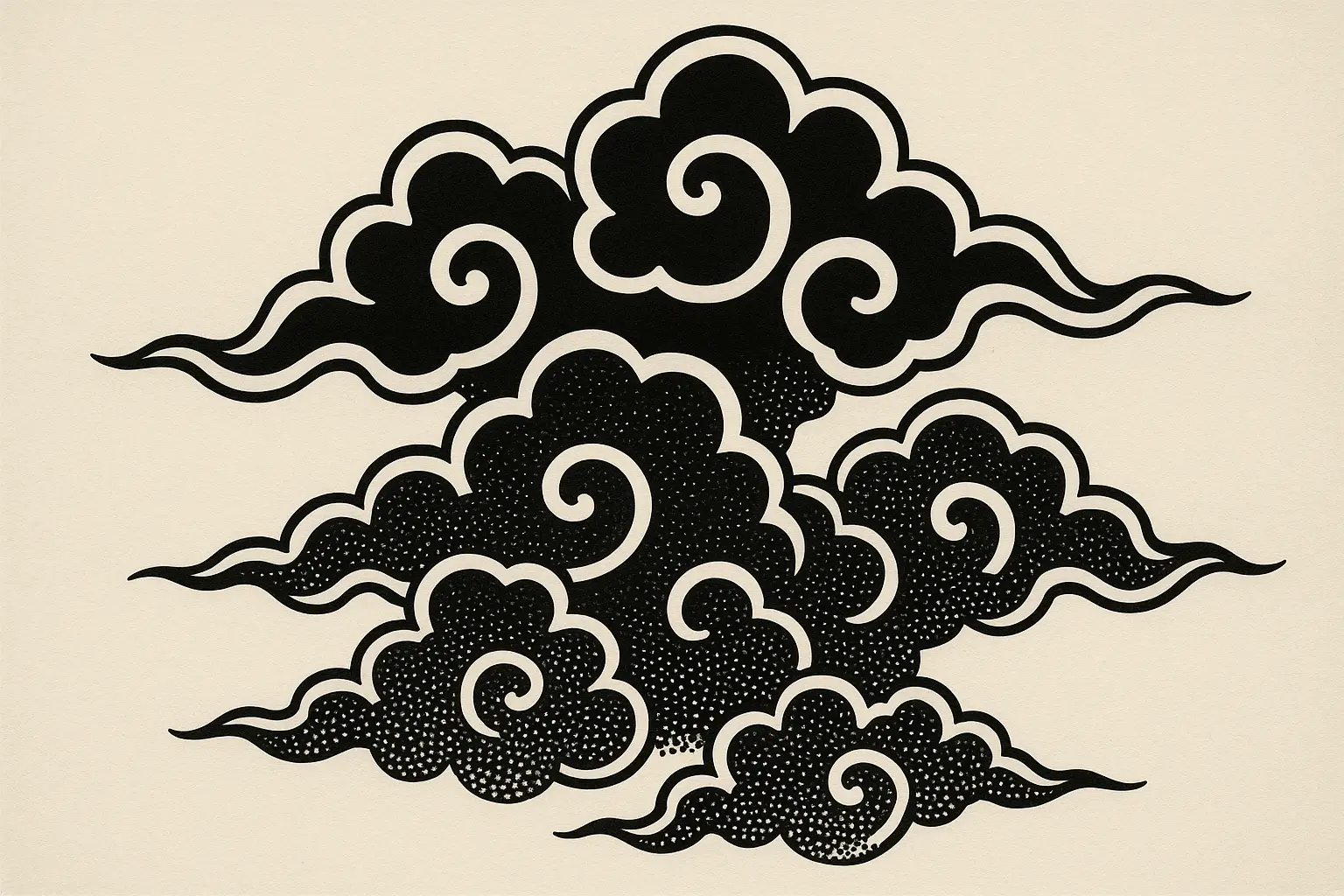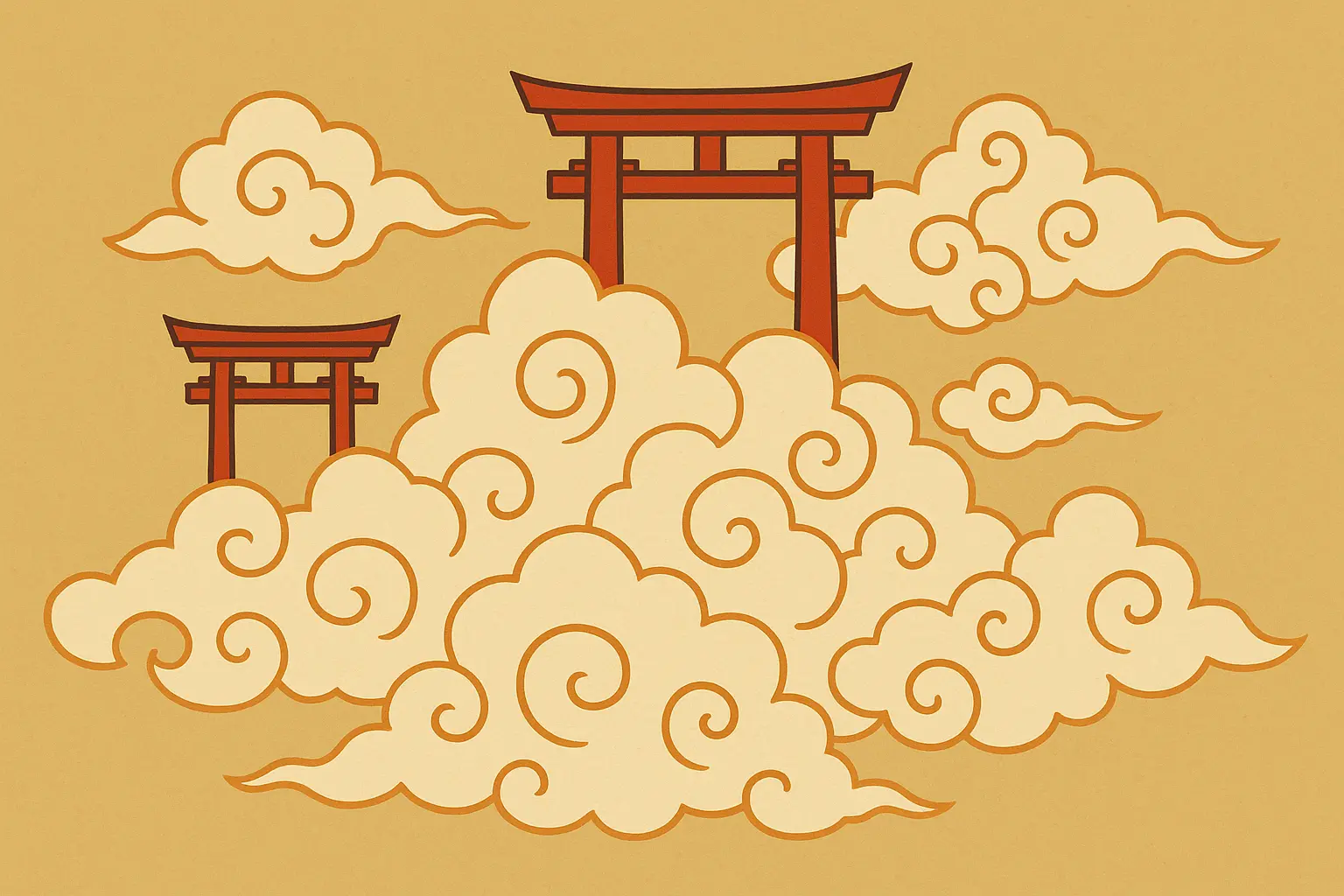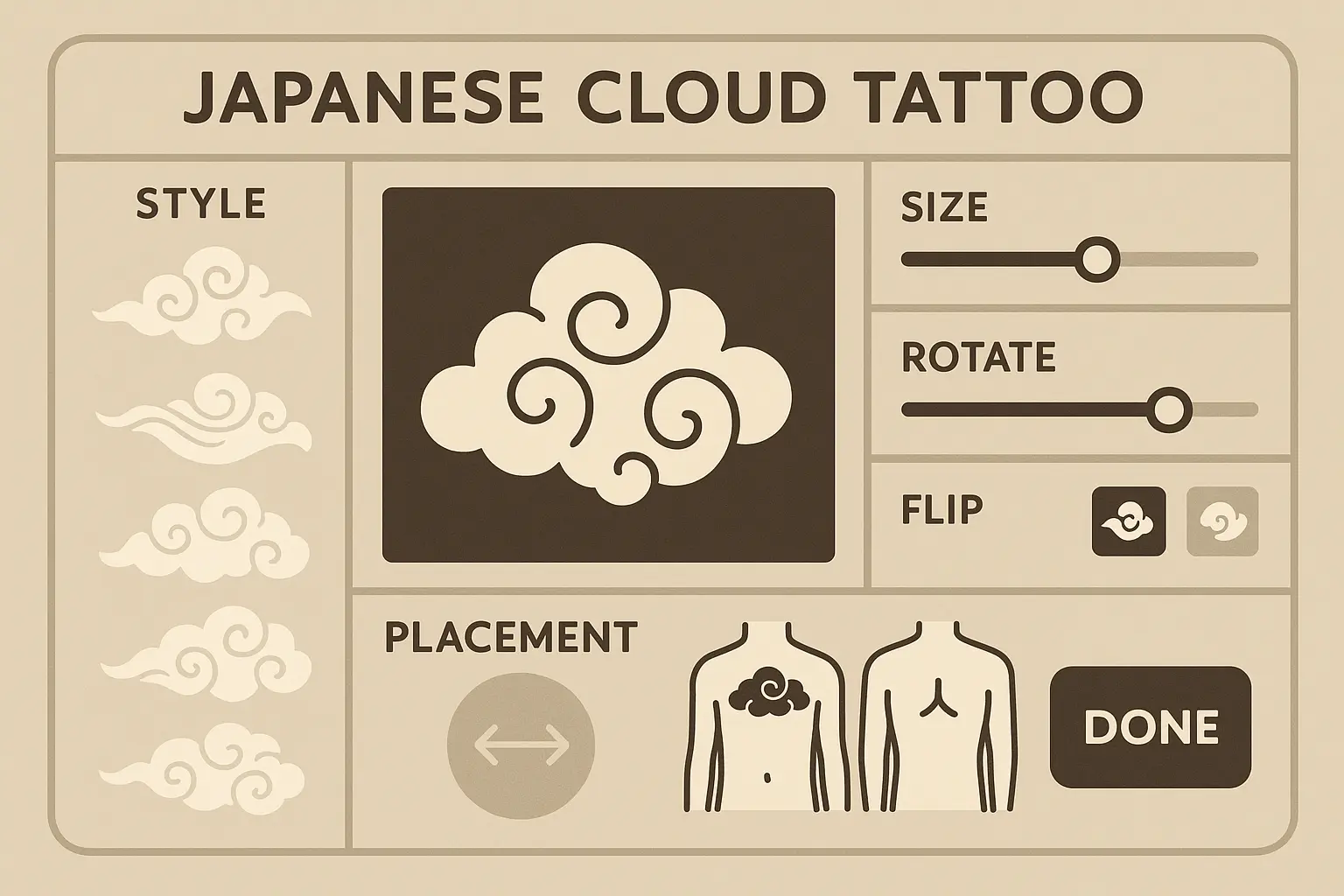25 Stunning Japanese Cloud Tattoo Designs That Will Transform Your Body Art Forever
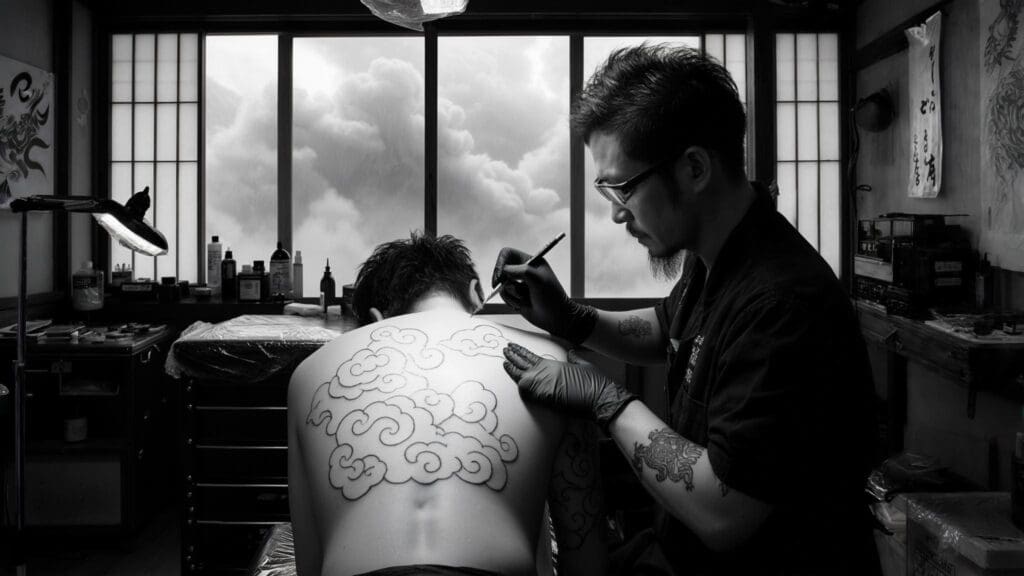
Japanese cloud tattoos have become really popular lately, and honestly, I get it. These traditional “kumo” designs represent transformation and life’s fleeting nature in ways that just resonate differently than other tattoo styles. While we don’t have exact numbers on Japanese cloud tattoos specifically, the broader Japanese tattoo movement has grown massively in Western culture over the past decade.
I remember my friend Jake got his first Japanese cloud tattoo after his dad passed away – he said the symbolism of life’s fleeting nature helped him process his grief. That’s when I really started paying attention to how powerful these designs can be. It’s not just about looking cool (though they definitely do), it’s about capturing something you feel but can’t quite put into words.
Table of Contents
-
Things You Should Think About First
-
Traditional Irezumi Style Cloud Designs (5 Designs)
-
Modern Neo-Traditional Cloud Variations (5 Designs)
-
Large-Scale Integration Cloud Masterpieces (5 Designs)
-
Small and Accent Cloud Details (4 Designs)
-
Contemporary Fusion Cloud Styles (3 Designs)
-
Symbolic and Spiritual Cloud Designs (3 Designs)
-
What Actually Works Best Across All Design Categories
-
How Tattoo Generator IQ Transforms Your Design Process
-
Final Thoughts
TL;DR
-
Japanese cloud tattoos offer 25+ distinct design options across six major categories, from traditional irezumi to modern fusion styles
-
Cultural authenticity requires understanding “kumo” symbolism and respecting traditional Japanese artistic principles
-
Placement considerations significantly impact both visual flow and long-term aging of cloud formations
-
Traditional designs age exceptionally well but require specialized artists with Japanese tattooing expertise
-
Modern neo-traditional approaches provide more artist options while maintaining cultural respect
-
Large-scale integration works best for comprehensive Japanese tattoo programs but demands significant commitment
-
Small accent clouds offer versatility for discrete placement but may lose detail over time
Things You Should Think About First
Getting the perfect Japanese cloud tattoo means thinking through cultural authenticity, artistic integration, placement strategy, size complexity, artist expertise, and long-term maintenance needs. Understanding these factors ensures your tattoo choice aligns with both your aesthetic preferences and practical requirements while respecting traditional Japanese artistic principles.
Understanding Cultural Significance and Respect
Japanese cloud motifs aren’t just pretty designs – they mean something. These “kumo” formations represent life’s transient nature, transformation, and the sacred connection between earthly and heavenly realms. You don’t need to be an expert in Japanese culture, but showing some respect for the tradition goes a long way.
When considering a japanese cloud tattoo, you’ll want to research the deeper meanings behind different cloud types rather than simply choosing based on visual appeal. These clouds are designed to complement dragons, koi fish, cherry blossoms, and waves – they exist as part of these cultural contexts rather than standing alone.
Look, I’m not saying you need a PhD in Japanese art history, but understanding the basics shows respect and helps you make better decisions about your tattoo.
Artistic Integration with Your Existing Tattoos
Your japanese cloud tattoo design needs to work with what you already have or what you’re planning to add later. Traditional Japanese tattooing follows specific rules about how everything fits together – it’s not just random placement.
If you’re building toward a comprehensive Japanese tattoo program, that’s awesome, but it’s a different approach than adding clouds to an eclectic mix of styles. This decision affects which design categories will work best for you long-term.
Understanding traditional Japanese artistic principles becomes crucial when planning comprehensive body art, especially if you’re considering multiple tattoos that need to work together harmoniously. This is particularly important when exploring japanese tattoo designs that follow authentic cultural guidelines.
|
Placement Area |
Ideal Cloud Style |
Size Range |
Pain Level |
Aging Quality |
|---|---|---|---|---|
|
Upper Back |
Large Storm Clouds |
8-12 inches |
Medium-High |
Excellent |
|
Forearm |
Wind-Swept Formations |
4-8 inches |
Medium |
Very Good |
|
Shoulder Cap |
Celestial Court Clouds |
6-10 inches |
Medium-High |
Excellent |
|
Wrist |
Minimalist Wisps |
2-3 inches |
Low-Medium |
Good |
|
Ribcage |
Mountain Mist |
6-12 inches |
High |
Excellent |
|
Ankle |
Cloud Bands |
3-5 inches |
Medium |
Good |
Placement Strategy for Maximum Impact
Cloud formations are great at following your body’s natural lines and muscle definition. The organic, flowing nature of these designs means placement affects both how it looks right now and how it’ll age over the next few decades.
Before finalizing your placement, understanding pain levels across different body areas helps you make an informed decision about where your japanese cloud tattoo will be most comfortable during the tattooing process.
Areas that stretch a lot or get regular sun exposure need different approaches than more stable spots. Think about how cloud movements will interact with how your body naturally moves.
Size and Detail Complexity Decisions
Japanese cloud tattoos range from tiny wisps to massive formations covering entire sections of your body. Smaller clouds might lose fine details over time, while larger pieces demand serious time, money, and pain tolerance.
Be realistic about your budget and commitment level. Detailed traditional work takes multiple sessions and costs real money, while simpler designs are more accessible entry points.
Here’s a real example: Sarah, a marketing professional, wanted a japanese cloud tattoo but needed something workplace-appropriate. She chose a 3-inch minimalist cloud wisp behind her ear, done in traditional black and gray shading. The placement lets her cover it with her hair during meetings while still enjoying the meaningful symbolism that drew her to japanese cloud tattoo designs in the first place.
Finding the Right Artist for Authentic Execution
Authentic japanese cloud tattoos require artists with specialized training in traditional techniques. This includes proper line work, shading gradients, and understanding traditional color application methods.
Look, finding an artist who really knows Japanese tattooing isn’t easy – especially outside major cities. Don’t just look at Instagram portfolios. Go meet them in person. Do you actually want to spend 8 hours with this person? Good artists are booked out months in advance, so plan accordingly.
Don’t compromise on expertise to save money – poor execution can’t be easily fixed later.
Long-Term Aging and Maintenance Planning
Japanese cloud tattoos typically age well because of bold line work and flowing designs that handle natural ink spread gracefully. However, fine details in wispy formations might need periodic touch-ups over your tattoo’s lifetime.
Understanding proper tattoo aftercare is crucial for maintaining the beauty and integrity of your japanese clouds over time.
Think about how your chosen design will look after 10-20 years of natural aging. Are you prepared for potential maintenance requirements? Traditional techniques generally need less upkeep than contemporary approaches with really fine detail work.
Sunscreen is your tattoo’s best friend. I know it’s boring, but it works. Some fading is inevitable – it’s not a failure, it’s just what happens.
Traditional Irezumi Style Cloud Designs
Traditional irezumi cloud designs represent the real deal in terms of cultural authenticity, featuring five distinct styles including wind-swept formations, storm clouds, celestial court clouds, seasonal rain clouds, and mountain mist variations. These designs follow centuries-old artistic principles with bold line work and traditional color palettes that age really well.
1. Classic Wind-Swept Clouds (Kaze-gumo)
These traditional formations show bold, sweeping curves with distinctive spiral endings that capture wind movement in static form. The traditional japanese cloud tattoo approach uses gradual shading transitions from deep blue-gray to pristine white, creating depth that seems to move across your skin.
Traditional placement includes shoulder caps, back panels, or sleeve integration alongside dragons or phoenixes. The flowing nature of kaze-gumo makes them perfect foundation elements for larger Japanese tattoo compositions.
2. Storm Clouds with Lightning Elements
Dramatic, dense cloud formations in deep grays and blues often incorporate subtle lightning bolt elements that add dynamic energy. These japanese cloud tattoo designs symbolize raw natural power, personal transformation, and the untamed forces that shape our lives.
The shading technique uses traditional Japanese gradients with sharp contrasts between light and dark areas. Storm clouds work really well for people drawn to more intense, powerful imagery within traditional frameworks.
3. Celestial Court Clouds (Tenku-gumo)
Elaborate, ornate cloud formations associated with heavenly realms in Japanese mythology feature intricate swirling patterns enhanced with gold highlights. These represent divine presence, spiritual elevation, and connection to celestial powers.
Tenku-gumo designs often pair beautifully with religious or mythological figures, creating comprehensive spiritual narratives across larger body areas. The ornate nature requires skilled artists capable of executing fine traditional details in japanese cloud tattoo work.
4. Seasonal Rain Clouds
Softer, more organic cloud shapes represent the changing seasons, particularly Japan’s distinctive rainy season (tsuyu). These use subtle color variations and gentle shading techniques to create peaceful, meditative qualities.
Popular for larger back pieces or chest panels, seasonal rain clouds offer emotional balance for people seeking tranquil energy in their tattoo choices. The gentle nature makes them excellent background elements for other traditional motifs.
5. Mountain Mist Clouds
Low-hanging, horizontal cloud formations represent the mystical mist surrounding sacred mountains in Japanese spiritual tradition. These designs emphasize horizontal flow patterns and use minimal color, focusing on black and gray gradients for maximum impact.
Symbolically connected to spiritual journeys and meditation practices, mountain mist clouds appeal to people seeking deeper meaning in their body art. The horizontal emphasis works beautifully across ribcage or back placements.
Modern Neo-Traditional Cloud Variations
Modern neo-traditional cloud designs blend traditional Japanese forms with contemporary techniques, offering five innovative approaches including geometric fusion, watercolor effects, minimalist interpretations, abstract formations, and vibrant color variations. These designs maintain cultural respect while appealing to modern aesthetic preferences.
6. Geometric Cloud Fusion
Contemporary interpretations combine traditional japanese clouds shapes with geometric line work, creating striking modern pieces that maintain cultural authenticity. Sharp geometric elements contrast beautifully with organic cloud flows, producing visually dynamic results.
These designs appeal to people who appreciate both traditional Japanese culture and modern graphic design aesthetics. The geometric elements can be customized to reflect personal style preferences while respecting traditional cloud formations.
7. Watercolor-Style Clouds
Modern watercolor techniques blend with traditional japanese clouds formations through bleeding color effects and soft edge treatments. The watercolor approach adds contemporary artistic flair while maintaining recognizable traditional shapes.
Color bleeding effects create dreamy, ethereal qualities that enhance the natural flowing movement of cloud formations. These designs work particularly well for people drawn to softer, more artistic interpretations of traditional motifs.
8. Minimalist Cloud Wisps
Simplified, clean-lined interpretations of traditional clouds perfect for smaller placements or subtle additions to existing tattoo collections. These maintain essential traditional elements while reducing complexity for modern minimalist aesthetics.
The clean approach appeals to people seeking Japanese cultural connection without overwhelming visual complexity. Minimalist wisps work excellently as accent pieces or standalone elements for professional environments.
Here’s what worked for one client: Marcus, a software engineer, wanted to honor his Japanese heritage without a large, visible tattoo. He chose a minimalist japanese cloud tattoo design for his inner wrist, measuring just 2 inches. The simplified traditional form uses really fine, detailed lines to create an ethereal formation that flows naturally with his wrist’s contours, allowing him to display or conceal it based on his clothing choices.
9. Abstract Cloud Formations
Artistic interpretations capture the essential spirit of Japanese clouds through abstract shapes and flowing lines rather than literal representations. These appeal to people drawn to modern artistic sensibilities while honoring traditional concepts.
Abstract formations allow for creative personal interpretation while maintaining connection to traditional Japanese cloud symbolism. The artistic freedom creates unique pieces that reflect individual aesthetic preferences.
10. Color-Pop Clouds
Traditional cloud shapes enhanced with vibrant, non-traditional colors create striking modern interpretations. Electric purples, hot pinks, or brilliant blues maintain traditional forms while incorporating contemporary color palettes.
Color-pop approaches appeal to people wanting traditional Japanese elements with modern visual impact. The bold colors create eye-catching results while respecting traditional compositional principles.
Large-Scale Integration Cloud Masterpieces
Large-scale cloud integration designs serve as comprehensive foundations for major Japanese tattoo programs, featuring five specialized approaches including full sleeve backgrounds, back panel landscapes, chest integration, leg wraps, and shoulder-to-forearm flows. These designs require expert planning and significant commitment but deliver maximum visual impact.
|
Design Type |
Time Investment |
Sessions Required |
Cost Range |
Artist Expertise Level |
|---|---|---|---|---|
|
Full Sleeve Background |
30-50 hours |
6-10 sessions |
$3,000-$8,000 |
Master Level |
|
Back Panel Landscape |
40-70 hours |
8-14 sessions |
$4,000-$12,000 |
Master Level |
|
Chest Panel Integration |
20-35 hours |
4-8 sessions |
$2,500-$6,000 |
Advanced |
|
Leg Sleeve Wrap |
35-55 hours |
7-12 sessions |
$3,500-$9,000 |
Master Level |
|
Shoulder-Forearm Flow |
25-40 hours |
5-9 sessions |
$2,800-$7,000 |
Advanced |
11. Full Sleeve Cloud Background
Comprehensive cloud coverage serves as the foundation for complete japanese cloud tattoo sleeve designs, requiring careful planning to ensure proper flow around arm contours while preserving space for focal elements.
The cloud work uses varying densities and shading techniques to create depth and visual interest throughout the entire sleeve. Different cloud types can represent various atmospheric conditions, creating rich storytelling opportunities across the full design.
These big pieces are expensive. Like, really expensive. Make sure you’re ready for that financial commitment. When planning a comprehensive sleeve design, understanding tattoo cost factors becomes essential for budgeting this significant investment properly.
12. Back Panel Cloud Landscape
Large-scale cloud formations designed for full back coverage create atmospheric backgrounds for major Japanese tattoo elements. These japanese cloud tattoo designs often incorporate multiple cloud types and weather conditions to tell complete visual stories across the entire back canvas.
Back panel clouds allow for the most comprehensive expression of traditional Japanese principles. The large canvas accommodates proper proportions and detailed execution that smaller placements can’t achieve.
Planning a sleeve? Think years, not months. Don’t plan anything important for the day after a long session – you’ll be tired.
13. Chest Panel Cloud Integration
Cloud designs specifically planned for chest placement work with natural muscle definition and breathing movement patterns. These typically feature central focal points with radiating cloud formations that enhance the chest’s natural contours.
Chest integration requires understanding how clouds will move with breathing and muscle flexion. The placement offers excellent visibility for detailed traditional work while creating powerful visual impact in japanese cloud tattoo applications.
14. Leg Sleeve Cloud Wraps
Cloud formations designed to wrap around legs from thigh to ankle create continuous flow that works with leg movement and muscle definition. These often incorporate ground-level mist effects transitioning to higher altitude cloud formations.
Leg wraps offer unique opportunities for vertical storytelling through different cloud types at various elevations. The design can represent ascending spiritual journeys or natural atmospheric layers.
15. Shoulder to Forearm Cloud Flow
Specialized cloud designs create seamless transitions from shoulder cap down to forearm, requiring expert understanding of how clouds would naturally flow across changing contours and joint movements.
This placement demands careful planning to maintain visual continuity across multiple body sections with different movement patterns. The flowing transition creates beautiful unified compositions when executed properly.
Small and Accent Cloud Details
Small and accent cloud designs offer maximum placement versatility through four specialized approaches including wrist wisps, behind-ear accents, ankle bands, and finger details. These designs maintain traditional authenticity while adapting to size constraints and discrete placement requirements.
16. Wrist Cloud Wisps
Delicate formations use really fine, detailed lines to create ethereal , flowing wisps that wrap naturally around wrist contours. The design typically measures 2-3 inches and employs minimal shading with strategic negative space to maintain clarity at small scale.
Traditional gray-to-white gradients ensure longevity while respecting authentic japanese clouds aesthetics. Perfect for first-time tattoo recipients or those seeking subtle Japanese elements that won’t interfere with professional requirements.
17. Behind-Ear Cloud Accents
Miniature cloud formations specifically designed for the curved space behind ears, measuring approximately 1-2 inches. These use simplified traditional shapes with bold, clean lines to ensure visibility and proper aging characteristics.
The design often incorporates single spiral elements representing wind movement, using black ink only to maintain contrast against varying skin tones and hair colors. Discrete placement offers personal meaning without public visibility in japanese cloud tattoo applications.
18. Ankle Cloud Bands
Horizontal cloud formations create bracelet-like effects around ankles, typically 4-6 inches in circumference. The design uses repeating traditional cloud motifs with connecting wind patterns, allowing for natural breaks that accommodate ankle movement.
Shading follows traditional Japanese techniques but simplified for smaller scale execution. The band approach works well for people wanting traditional elements with feminine, jewelry-inspired aesthetics in their japanese cloud tattoo.
19. Finger Cloud Details
Ultra-minimalist cloud elements designed for finger placement require masterful technique to maintain traditional authenticity at 0.5-1 inch scale. These use single-line cloud suggestions with minimal detail, focusing on essential shape recognition rather than complex shading.
Best executed in black ink only due to size constraints, finger clouds work excellently as subtle accent pieces. The small scale demands expert artists capable of maintaining clarity at miniature dimensions.
Small cloud tattoos can blur over time. I’m not trying to scare you, but it’s something to consider. Budget for touch-ups – even the best tattoos might need them after a few years.
Contemporary Fusion Cloud Styles
Contemporary fusion cloud designs blend Japanese traditions with modern tattoo styles through three innovative approaches including Japanese-American traditional hybrids, blackwork interpretations, and realistic cloud studies. These designs balance cultural respect with creative innovation for unique personal expression.
20. Japanese-American Traditional Hybrid
These designs blend japanese cloud tattoos formations with American traditional bold outlines and saturated color palettes. The clouds maintain traditional Japanese flow and composition while incorporating American traditional elements including bold black outlines and solid color fills.
Popular color combinations include traditional Japanese blues and grays with American traditional reds or yellows as accent colors. This fusion appeals to people wanting both cultural traditions represented in their body art.
21. Blackwork Cloud Interpretations
Japanese cloud formations rendered entirely in black ink using modern blackwork techniques including dotwork, geometric patterns, and negative space manipulation. These maintain traditional cloud shapes while incorporating contemporary blackwork aesthetics.
The high contrast creates dramatic visual impact while honoring traditional compositions. Blackwork approaches appeal to people drawn to bold, graphic interpretations of traditional japanese clouds forms.
22. Realistic Cloud Studies
Photorealistic cloud formations based on actual meteorological phenomena but arranged using traditional Japanese compositional principles. These combine modern realism techniques with traditional placement and flow concepts.
The approach creates scientifically accurate clouds that follow authentic Japanese artistic arrangements. Requires advanced shading skills and understanding of both realism and Japanese traditional principles for proper execution.
Symbolic and Spiritual Cloud Designs
Symbolic and spiritual cloud designs incorporate deep Japanese religious and philosophical traditions through three meaningful approaches including Buddhist cloud mandalas, Shinto sacred clouds, and Zen garden interpretations. These designs offer profound spiritual connection and personal meaning beyond aesthetic appeal.
23. Buddhist Cloud Mandalas
Cloud formations arranged in mandala patterns incorporate Buddhist symbolism and meditation principles. These japanese clouds tattoos often feature lotus elements emerging from or dissolving into cloud formations, representing enlightenment and rebirth cycles.
The circular composition requires careful planning for proper symmetry and spiritual significance. Buddhist cloud mandalas appeal to people seeking tattoos that support meditation practices and spiritual growth.
Real client story: Jennifer, a yoga instructor and Buddhist practitioner, chose a Buddhist cloud mandala for her upper back. The 8-inch circular design features traditional clouds arranged around a central lotus, with each cloud formation representing one of the Noble Eightfold Path elements. The symmetrical composition supports her meditation practice while honoring her spiritual journey through traditional Japanese artistic expression.
24. Shinto Sacred Clouds
Cloud designs incorporating Shinto spiritual elements include torii gates emerging from or disappearing into cloud formations. These represent the connection between physical and spiritual realms, often featuring subtle kami (spirit) elements within cloud structures.
Shinto clouds work beautifully for people drawn to Japanese spiritual traditions and nature-based religious practices. The designs honor traditional Shinto beliefs while creating visually stunning compositions in japanese cloud tattoo ideas.
25. Zen Garden Clouds
Minimalist cloud interpretations inspired by Japanese zen garden principles use negative space and simple line work to create meditative, peaceful designs. These emphasize the concept of emptiness (ku) and impermanence central to Zen philosophy.
The minimalist approach appeals to people seeking tattoos that promote calm contemplation and mindfulness practices. Zen garden clouds work excellently for meditation-focused individuals wanting meaningful body art.
What Actually Works Best Across All Design Categories
Each design category offers distinct advantages and considerations across cultural authenticity, artistic integration, placement versatility, aging characteristics, artist requirements, and maintenance needs. Understanding these performance factors helps you choose designs that align with your priorities and long-term satisfaction goals.
|
Design Category |
Cultural Authenticity |
Artist Availability |
Aging Quality |
Maintenance Needs |
Versatility Score |
|---|---|---|---|---|---|
|
Traditional Irezumi |
Excellent (9/10) |
Limited (4/10) |
Excellent (9/10) |
Low (2/10) |
Good (7/10) |
|
Neo-Traditional |
Very Good (8/10) |
Good (7/10) |
Very Good (8/10) |
Medium (5/10) |
Excellent (9/10) |
|
Large-Scale Integration |
Excellent (9/10) |
Very Limited (3/10) |
Excellent (9/10) |
Low (2/10) |
Limited (4/10) |
|
Small/Accent Details |
Good (7/10) |
Excellent (9/10) |
Good (6/10) |
Medium-High (7/10) |
Excellent (10/10) |
|
Contemporary Fusion |
Good (6/10) |
Very Good (8/10) |
Variable (6/10) |
Variable (6/10) |
Very Good (8/10) |
|
Symbolic/Spiritual |
Excellent (9/10) |
Limited (5/10) |
Very Good (8/10) |
Low-Medium (4/10) |
Good (7/10) |
Traditional Irezumi Style Performance
Traditional japanese cloud tattoo designs score highest in cultural authenticity, following centuries-old artistic principles with proven aging characteristics. They integrate seamlessly with other Japanese elements but require specialized artists and work best on larger placements.
The bold line work and traditional shading techniques age really well over decades, requiring minimal maintenance. However, the specialized knowledge required limits artist options and may increase project costs.
Modern Neo-Traditional Performance
Neo-traditional approaches balance cultural respect with contemporary appeal, offering good versatility across placement options and artist availability. They maintain traditional forms while incorporating modern techniques that appeal to diverse aesthetic preferences.
These designs generally age well with moderate maintenance requirements. The broader artist availability makes them more accessible while still benefiting from Japanese cultural knowledge in japan cloud tattoo applications.
Large-Scale Integration Performance
Large-scale work allows full expression of traditional Japanese principles with excellent aging characteristics and minimal maintenance needs. However, they require significant space commitment and highly specialized artists, limiting placement options and increasing project complexity.
The substantial size allows for bold line work that withstands natural aging processes really well. These designs work best for people committed to comprehensive Japanese tattoo programs.
Small and Accent Cloud Performance
Small designs offer maximum placement versatility and work well as accent pieces or standalone elements. They’re more accessible to artists with fine-line experience, though Japanese knowledge remains beneficial for authentic execution.
Fine details may blur over time, requiring careful initial execution and potential touch-ups. The simplified nature helps maintain recognizable forms even as details soften with age.
Contemporary Fusion Performance
Fusion designs balance tradition with innovation, creating respectful modern interpretations that adapt well to various artistic styles. They offer good versatility across different placements while being accessible to artists with diverse backgrounds.
Aging varies by specific techniques used, with some fusion approaches requiring more maintenance than others. The creative flexibility appeals to people wanting unique personal expression within cultural boundaries.
Symbolic and Spiritual Performance
Spiritual designs offer profound cultural connection rooted in Japanese religious traditions. They integrate beautifully with other spiritual elements but often require specific placement considerations for proper significance.
Generally age well with traditional techniques, though spiritual details may need respectful maintenance approaches. These designs require artists with understanding of Japanese spiritual traditions for culturally appropriate execution.
How Tattoo Generator IQ Transforms Your Design Process
Tattoo Generator IQ’s AI-powered platform eliminates guesswork in Japanese cloud tattoo creation by providing culturally authentic designs, educational resources, seamless artist collaboration tools, and customization options within traditional boundaries. The platform ensures your tattoo choice reflects genuine appreciation while streamlining the entire design and consultation process.
Creating the perfect Japanese cloud tattoo involves balancing cultural authenticity, personal meaning, and artistic excellence. Many people struggle with understanding traditional principles or communicating their vision effectively to artists.
Our specialized AI models have been trained on authentic Japanese tattoo portfolios, ensuring generated cloud formations follow traditional wind patterns, proper shading gradients, and culturally appropriate compositional principles. We understand the specific requirements of Japanese tattooing rather than general AI art generation.
The platform includes comprehensive educational resources about Japanese cloud symbolism, traditional placement principles, and cultural significance. This ensures your japanese clouds tattoo choice reflects genuine appreciation rather than appropriation, helping you understand the deeper meaning behind your chosen design.
Generate high-resolution, artist-ready references that clearly communicate your vision to tattoo professionals. Our placement guides and technical specifications help artists understand proper sizing, orientation, and integration with your body’s natural contours, whether you’re planning a cloud tattoo on shoulder placement or other areas, streamlining the consultation process.
Our platform works seamlessly with artists who specialize in traditional Japanese tattoo techniques ensuring your design maintains cultural authenticity while meeting your personal aesthetic preferences.
Experiment with different approaches to Japanese cloud design while maintaining cultural authenticity. Our custom style blending allows you to explore variations in density, color intensity, and detail level without compromising traditional artistic principles.
Whether you’re drawn to storm clouds’ bold drama, mountain mist’s serene beauty, or celestial formations’ spiritual significance, Tattoo Generator IQ provides the tools and knowledge to create culturally respectful designs that will serve as meaningful companions throughout your life.
Final Thoughts
Japanese cloud tattoos offer an incredible journey into one of tattooing’s most respected and meaningful traditions. With 25 distinct design options across six major categories, you have tons of possibilities for creating body art that honors centuries of cultural wisdom while reflecting your personal story.
The key to success lies in understanding that these aren’t just decorative elements – they’re cultural artifacts with deep spiritual and artistic significance. Whether you choose traditional irezumi authenticity, modern neo-traditional innovation, or contemporary fusion creativity, respecting the cultural foundation ensures your japanese clouds tattoo will remain meaningful for decades to come.
I’ll be honest – I’ve seen people rush into big Japanese pieces and regret not starting smaller. Sometimes you just have to pick a design and go with it, but make sure you’re doing it for the right reasons. Don’t get tattooed when you’re going through a breakup. Trust me on this one.
Remember that the best japanese cloud tattoo is one that resonates with your personal journey while honoring the artistic traditions that created these timeless designs. Take time to research, find the right artist, and choose designs that will grow with you throughout your life’s transformations – just as the ever-changing clouds they represent.
Your tattoo will look weird and crusty for the first week. That’s normal. Your first session will probably hurt more than you expect, but less than you feared. And remember – regular unscented moisturizer works just as well as that expensive tattoo lotion.
What if your taste changes in 10 years? It probably will, and that’s okay. These designs are built to age gracefully with you.
